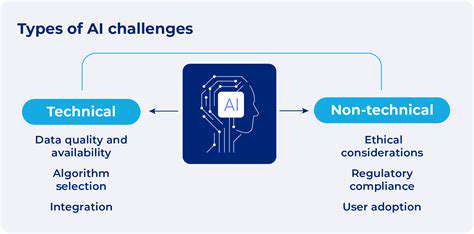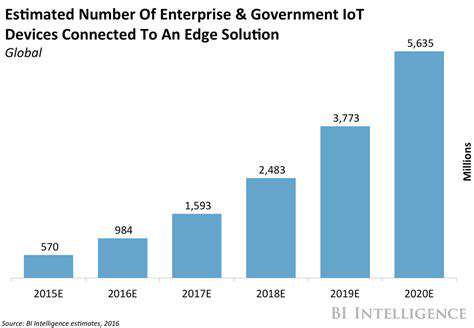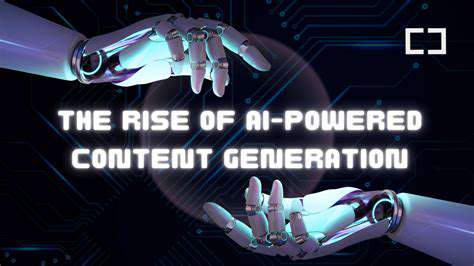Predictive Modeling: Forecasting Neurological Outcomes with AI
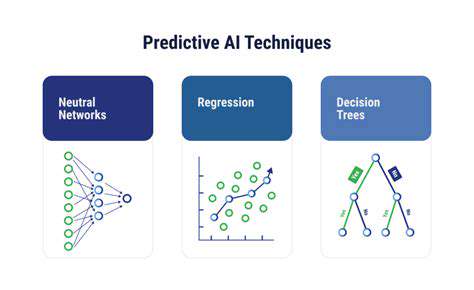
Understanding Predictive Modeling
At the intersection of data science and neuroscience lies predictive modeling, a powerful approach that allows researchers to anticipate neurological outcomes by analyzing patterns in brain data. Rather than simply reacting to symptoms, this method enables proactive interventions by identifying subtle indicators before they manifest clinically. The real value emerges when these models can predict disease progression years in advance, giving patients and doctors a crucial head start.
The process begins with careful algorithm selection tailored to neurological data's unique characteristics. Unlike generic models, these must account for brain imaging complexities, accounting for both structural and functional relationships. Special attention goes to temporal patterns, as neurological conditions often develop over extended periods.
Core Methodologies in Neurological Prediction
When working with brain data, certain techniques prove particularly valuable. Deep learning architectures like convolutional neural networks excel at interpreting MRI scans, while recurrent networks handle time-series EEG data effectively. What makes neurological modeling distinct is the need to integrate multiple data types - from genomic markers to behavioral assessments - into a unified predictive framework.
Bayesian approaches gain traction when dealing with uncertainty in early-stage predictions, while ensemble methods help mitigate the variability inherent in neurological measurements. The choice often depends on whether researchers prioritize interpretability (favoring simpler models) or pure predictive power (opting for complex architectures).
Preparing Brain Data for Analysis
Neurological data presents unique preprocessing challenges. Motion artifacts in fMRI scans require specialized correction techniques, while electrode drift in EEG recordings demands careful normalization. Perhaps most critically, researchers must develop robust protocols for harmonizing data across different imaging centers and scanner types to ensure reliable predictions.
Feature engineering takes on special importance with brain data. Spatial relationships between voxels in neuroimages, frequency bands in electrophysiological signals, and connectivity patterns in network analyses all require domain-specific transformations. The most successful approaches often combine automated feature extraction with neuroscientist-guided feature selection.
Validating Neural Predictions
Evaluation metrics must be carefully chosen to match clinical relevance. While accuracy matters, sensitivity often takes priority in neurological applications - missing a true positive (failing to detect impending disease) typically carries greater consequences than a false alarm. Longitudinal validation becomes essential, as the true test of a neurological predictive model lies in its ability to forecast outcomes months or years into the future.
Cross-validation strategies must account for the nested structure of neurological data (multiple measurements per subject) to avoid overoptimistic performance estimates. External validation across diverse populations remains the gold standard, though challenging to implement.
Implementing Predictive Systems in Clinical Settings
Deployment challenges go beyond technical implementation. Successful integration requires addressing clinician workflow considerations, regulatory requirements, and patient privacy concerns specific to neurological data. The most effective systems provide not just predictions but actionable clinical decision support, explaining the reasoning behind their outputs.
Continuous monitoring must account for concept drift - the gradual changes in disease patterns and diagnostic criteria that affect model performance over time. Establishing feedback loops where clinician assessments can refine the models creates a virtuous cycle of improvement.
The Future of Neuroscience Research with AI: Ethical Considerations and Challenges
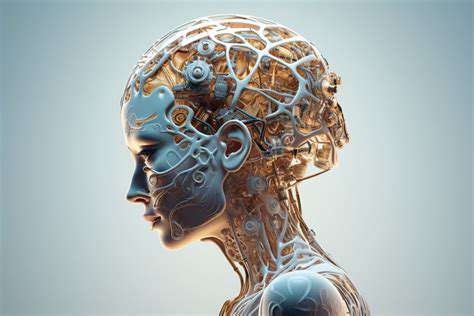
Breakthroughs in Brain Imaging Technology
The frontier of brain imaging now extends beyond static snapshots to dynamic, multi-modal observations. Next-generation techniques like ultra-high field MRI and optical coherence tomography are revealing cellular-level details noninvasively, while simultaneous PET-MRI combines metabolic and structural information. These advances allow researchers to observe neural processes at unprecedented temporal and spatial scales.
Perhaps more importantly, these technologies are becoming more accessible outside research labs. Portable EEG headsets and simplified MRI protocols are democratizing brain research, enabling larger and more diverse studies. This shift promises to reduce historical biases in neurological datasets that have limited the generalizability of findings.
Computational Models of Brain Function
The field is moving beyond descriptive models to predictive, mechanistic simulations of neural systems. Whole-brain simulations now incorporate not just connectivity but neurochemical dynamics and plasticity rules. These digital twins of brain function allow researchers to virtually test interventions that would be impossible or unethical to attempt in living subjects.
A particularly promising direction involves linking these models across scales - from molecular interactions to circuit-level behaviors to cognitive phenomena. This multi-scale approach may finally bridge the gap between basic neuroscience findings and clinically relevant applications.
Personalized Neurological Care
The era of one-size-fits-all neurology is ending. By combining an individual's neuroimaging, genetic, and lifestyle data, clinicians can now develop truly personalized risk assessments and treatment plans. This approach proves particularly valuable for conditions like epilepsy and Parkinson's disease, where medication responses vary dramatically between patients.
Emerging neurotechnologies take personalization further. Closed-loop deep brain stimulation systems now adjust therapy parameters in real-time based on neural activity. Similar principles are being applied to cognitive therapies, with VR environments that adapt to a patient's specific rehabilitation needs.
Navigating the Neuroethics Landscape
As these technologies advance, they raise profound ethical questions that demand proactive attention. The ability to predict neurological conditions years in advance creates complex dilemmas around disclosure, insurance implications, and psychological impact. Similarly, neurotechnologies that alter brain function blur traditional lines between therapy and enhancement.
Effective governance will require multidisciplinary collaboration, bringing together neuroscientists, ethicists, policymakers, and patient advocates. Public engagement initiatives must move beyond simple education to co-creation of guidelines and oversight mechanisms. Only through inclusive, transparent dialogue can we ensure these powerful technologies serve humanity's best interests while respecting individual rights and dignity.

